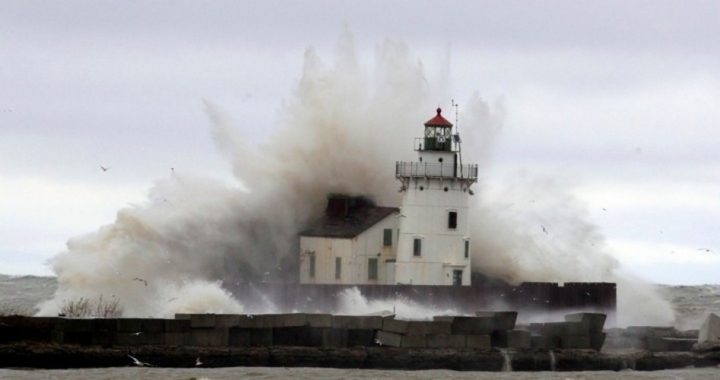
As the northeast coast mourns and struggles in the aftermath of Hurricane Sandy, the U.S. death toll nears 100 and experts estimate up to $20 billion in total insured damages. In the midst of the devastation, power outages, gas shortages, and scarcity of relief supplies, media is adding to the frenzy, blaming Sandy’s fury on climate change and calling “Frankenstorm,” the “new norm.”
“Anyone who says there’s not a dramatic change in weather patterns, I think is denying reality,” said New York Governor Andrew Cuomo at a press conference on October 30. New York Mayor Mike Bloomberg agreed, adding, “What is clear is that the storms that we’ve experienced in the last year or so, around this country and around the world, are much more severe than before.”
Weather experts disagree. The New York Times quotes Martin Hoerling, a meteorologist with the National Oceanic and Atmospheric Administration:
As to underlying causes, neither the frequency of tropical or extratropical cyclones over the North Atlantic are projected to appreciably change due to climate change, nor have there been indications of a change in their statistical behavior over this region in recent decades.
Kevin Trenberth, a climatologist with the National Center for Atmospheric Research who made headlines in 2009 at the center of the Climategate scandal, is also skeptical of reports linking Sandy to global warming. He told the New York Times that, despite changing Arctic conditions, “the actual heating of the atmosphere is very small to cause it to do anything.” He concluded that “the null hypothesis has to be that this is just ‘weather’ and natural variability.”
Though Hurricane Sandy did break records in regard to barometric pressure, wave surges and power outages, she is not the trend-setter some claim. She is neither the largest Atlantic storm on record nor the deadliest. The National Hurricane Center reports Olga was the largest in recorded history with a wind extent of 600 miles, more than 100 miles greater than Sandy’s. In terms of death toll, among the top ten worst U.S. natural disasters reported by LiveScience are the Galveston Hurricane of 1900 which claimed 8,000 lives and the Lake Okeechobee Hurricane of 1928 which killed 2,500.
According to the catastrophe insurance provider ICAT, even if Sandy’s damage fulfills worst-case estimates, she would also not make the top 10 list of costliest hurricanes. ICAT’s Damage Estimator compares the financial cost of storms since 1900 adjusted for inflation. It ranks the Great Miami Hurricane of 1926 as number one at more than $180 billion in 2012 dollars. The Galveston and Lake Okeechobee storms rank second and ninth respectively, and seven of the top ten occurred before 1961. Hurricane Katrina is number four.
The disparity in cost and death toll is even more shocking when the relative population and development of coastal areas is considered. University of Colorado environmental professor Dr. Roger Pielke, Jr., made this point in his Wall Street Journal article on October 31. He attributes the staggering financial costs of modern storms to the fact that “there are more people and more wealth in harm’s way” than ever before. He credits emergency preparedness and response teams in both public and private sectors with keeping Sandy’s disaster tolls much lower than they might otherwise have been.
Pielke warns of a greater public danger than Atlantic storms: “Public discussion of disasters risks being taken over by the climate lobby and its allies, who exploit every extreme event to argue for action on energy policy.” Referencing Cuomo’s and Bloomberg’s comments above he opines, “to connect energy policy and disasters makes little scientific or policy sense,” and he cites the recent extreme-event report of the UN Intergovernmental Panel on Climate Change admitting “no signs that human-caused climate change has increased the toll of recent disasters.” Rather than enacting knee-jerk policy decisions, Pielke recommends practical strategies with a proven success record such as “strategic land use, structural protection and effective forecasts, warnings and evacuations.”
Those who declare Hurricane Sandy a harbinger of worse storms to come base their claims on faulty weather models and speculation rather than actual scientific data, says Ed Hiserodt, science and technology writer for The New American. “Media sensationalism isn’t going to help the northeast recover,” he warns. “And implying that people affected by the storm are somehow responsible for the devastation by contributing to climate change is repulsive.”
Photo: AP Images




